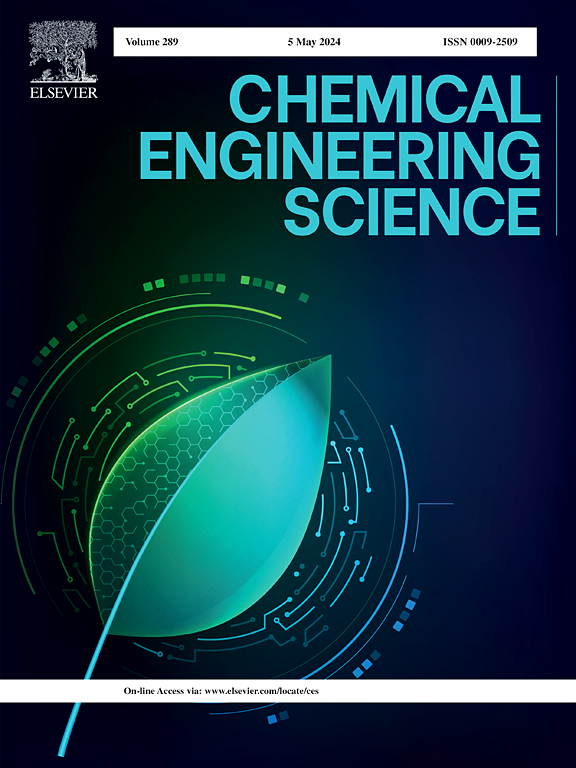On interaction models for numerical simulations of bubbling and turbulent fluidized beds: Flow hydrodynamics and reactor performance
IF 4.3
2区 工程技术
Q2 ENGINEERING, CHEMICAL
引用次数: 0
Abstract
Computational fluid dynamics is a powerful tool for designing, optimizing, and scaling up bubbling and turbulent fluidized beds. The two-fluid model is widely used due to its computational efficiency, but its accuracy depends on proper constitutive closures, particularly for inter-particle, particle-wall, and inter-phase interactions. The effects of these interactions on hydrodynamics are well-studied, but research on their influence on the reaction behavior of Geldart A particles in bubbling and turbulent fluidized beds remains limited. This study systematically examines their impact on hydrodynamics and reactor performance, validated by experiments. Results indicate that particle-wall interactions have the greatest influence, followed by inter-phase interactions, while particle-particle effects are relatively minor. A refined two-fluid model was developed, showing strong agreement with experimental data across a range of superficial gas velocities. This study provides new insights into the behavior of Geldart A particles in bubbling and turbulent fluidized beds and offers guidelines for accurate simulations.
鼓泡与湍流流化床数值模拟的相互作用模型:流体力学与反应器性能
计算流体动力学是设计、优化和放大鼓泡和湍流流化床的有力工具。双流体模型由于其计算效率而被广泛使用,但其准确性取决于适当的本构闭包,特别是对于颗粒间,颗粒-壁和相间相互作用。这些相互作用对流体力学的影响已经得到了很好的研究,但对它们对气泡流化床和湍流流化床中Geldart A颗粒反应行为的影响的研究仍然有限。本研究系统地考察了它们对流体力学和反应器性能的影响,并通过实验验证。结果表明,颗粒-壁相互作用的影响最大,相间相互作用次之,颗粒-粒子作用相对较小。开发了一个改进的双流体模型,在表面气体速度范围内显示出与实验数据的强烈一致性。该研究为研究Geldart A颗粒在鼓泡流化床和湍流流化床中的行为提供了新的见解,并为精确模拟提供了指导。
本文章由计算机程序翻译,如有差异,请以英文原文为准。
求助全文
约1分钟内获得全文
求助全文
来源期刊

Chemical Engineering Science
工程技术-工程:化工
CiteScore
7.50
自引率
8.50%
发文量
1025
审稿时长
50 days
期刊介绍:
Chemical engineering enables the transformation of natural resources and energy into useful products for society. It draws on and applies natural sciences, mathematics and economics, and has developed fundamental engineering science that underpins the discipline.
Chemical Engineering Science (CES) has been publishing papers on the fundamentals of chemical engineering since 1951. CES is the platform where the most significant advances in the discipline have ever since been published. Chemical Engineering Science has accompanied and sustained chemical engineering through its development into the vibrant and broad scientific discipline it is today.
 求助内容:
求助内容: 应助结果提醒方式:
应助结果提醒方式:


